Squaring the circle: we survey the world’s top bands on concert formation
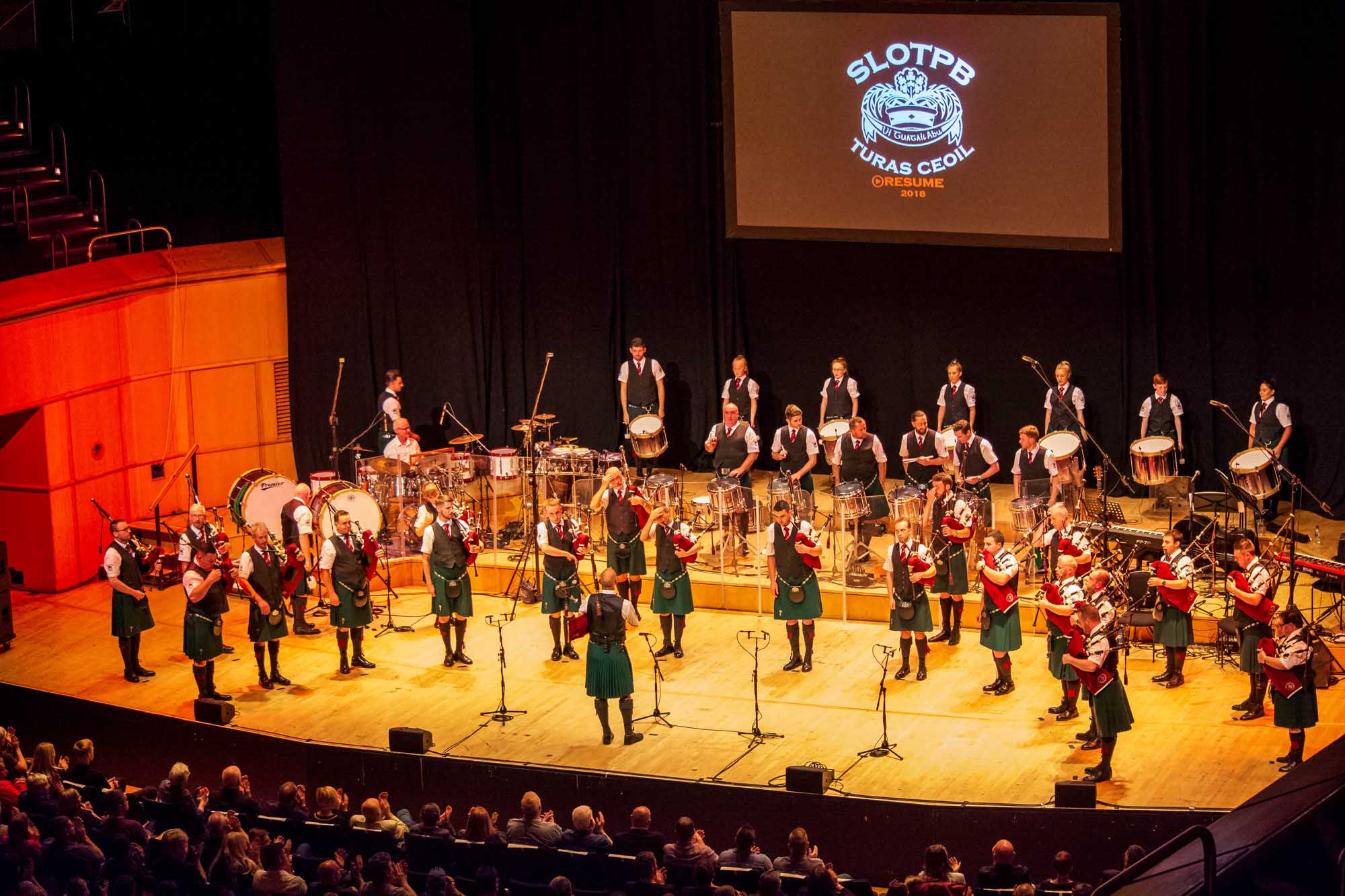
Pipe band competition formation has been debated for at least the last three decades. Our traditional format is a familiar “circle,” pipers creating an inward-facing crescent, drummers lined up to close the gap.
It’s actually more like the letter D than the letter O.
Some argue that performers’ backs turned to an audience is rude. Others will say the pipe band circle is conducive to unison and sound.
Others contend that “concert’ formation, with players facing an audience as in a concert, is audience-friendly, allowing judges to hear and see everything more clearly. Others argue that concert formation favours larger bands and invites logistical confusion getting on and off the competition area.
The Royal Scottish Pipe Band Association has said that, with the season cancelled, they’ll ask their member bands for their opinions.
pipes|drums would rather not wait, so we set out with a survey of leaders of the world’s Grade 1 and Grade 2 bands. Not only did we ask them about competition format, but we took the opportunity to revisit their opinions on band size, and whether maximum numbers should be placed on competing sections and/or total band rosters.
We reached out to the 25 Grade 1 and 47 Grade 2 bands around the world. We heard back from almost all of them – enough to provide a good view of what they think today.
Let’s get to it.
What competition performance format would you most prefer?
Measuring all bands responding, the majority want a combination, with Medleys in concert format, but keeping MSRs in traditional circle. Four percentage points behind show that bands want to maintain the current formation for all events, while only 4% want all events in concert formation.
- Only medley events in concert formation, with MSRs in closed circle (as-is): 50%
- All events in traditional closed circle format (as-is). 46%
- All events in concert formation. 4%
Grade 1 bands only:
- Only medley events in concert formation, with MSRs in closed circle (as-is): 52%
- All events in traditional closed circle format (as-is). 48%
- All events in concert formation. 0%
Looking only at Grade 2 bands, again, results are similar, but more want all events in concert formation:
- Only medley events in concert formation, with MSRs in closed circle (as-is): 47%
- All events in traditional closed circle format (as-is). 46%
- All events in concert formation. 6%
Counting all bands from the UK and Ireland:
- All events in traditional closed circle format (as-is). 68%
- Only medley events in concert formation, with MSRs in closed circle (as-is): 21%
- All events in concert formation. 11%
Verbatim comments:
- “I’m a traditionalist and like the fact bands march into circle formation.”
- “Why try and fix something that ain’t broken!!!!”
All bands from Scotland:
- All events in traditional closed circle format (as-is). 67%
- Only medley events in concert formation, with MSRs in closed circle (as-is): 20%
- All events in concert formation. 13%
Verbatim comments:
- “Pipers in a u shape, then a line of tenors out of circle and a line of side behind them with social distances.”
- “I don’t see how or why looking at performers faces will enhance audience enjoyment. Tonally the circle works. I would however advocate a total revamp on format of music, duration of performances. The 2×4 pace roll is updated and hinders what bands can offer musically.”
- “Where possible and dependent on the situation at the time relating to COVID.”
And counting only bands from North America, there is much stronger support for Medleys in concert formation, but no band wants to see all events that way:
- Only medley events in concert formation, with MSRs in closed circle (as-is): 71%
- All events in traditional closed circle format (as-is). 7%
- All events in concert formation. 0%
Verbatim comments:
- “I actually don’t mind either format, although the concert for medley may allow for something different and provide more entertainment!”
- “Would love risers for drummers a la Bagad”
- “A concert formation at the World’s is pointless unless they are also going to re-structure the spectator stands. A concert formation in the current Grade 1 or 2 arena is still 75% of people getting the back view.”
- “I only say that we should keep MSRs in traditional format as a first step. Medley in concert formation makes sense to me, and I’m sure that MSRs would suit the same. The piping world is so averse to change that I think doing one event at a time would be a wiser move to ensure a smoother transition.
- “I enjoy playing in concert formation for *some* competitions, such as Chicago, but I would not want wholesale change all at once to every medley being played outside of the circle.”
- “If Concert formation it should be on a stage with risers.”
Okay, so there’s strong divide between bands based in the UK and Ireland, who mostly want to continue with the closed circle format for everything, and those in North America, who strongly want Medleys to be in concert formation.
But interestingly, a decent number of UK and Ireland bands would like to see all contests in concert formation, while there’s zero desire from North American bands for MSRs in concert format.
Measuring size . . .
While we had their attention, we revisited our questions about band size, and whether maximum numbers should be put on competing players and total registered rosters. We’ve been discussing this issue for a long time now, ranging from surveys to editorials, and even to a debate between pipe band greats Chris Armstrong and Bill Livingstone arguing each side of the issue at Piping Live! in 2014.
 Pipe Band Size Matters Debate: Armstrong and Livingstone take sides
Pipe Band Size Matters Debate: Armstrong and Livingstone take sides
April 13, 2014
Onto the result of this year’s size survey.
Should the size of bands be limited? Measuring all Grade 1 and Grade 2 bands that responded, 54% say Yes, there should be limits, and 46% saying No, the sky should continue to be the limit.
Of Grade 1 bands only, 51% want size caps, and 49% don’t.
Measuring only Grade 2 bands, 54% say Yes to max limits and 46% say No.
Of UK and Ireland bands:
- Yes 53%
- No 47%
Of only bands based in Scotland, perhaps surprisingly 60% want size caps and 40% don’t.
And even more North American bands want limitations on sizes:
- Yes 67%
- No 33%
If any band answered Yes, they would like size caps, we asked them to go deeper.
Since you answered yes, how should size be limited?
All bands answering Yes:
- BOTH section and overall roster sizes should be limited: 56%
- A band’s total roster should be limited, but can compete with as many players from that roster as they wish: 25%
- Pipe section and drum section should each have a maximum number of players who can compete on the field, but no limit to total roster size: 19%
UK and Irish bands wanting size caps:
- BOTH section and overall roster sizes should be limited: 50%
- A band’s total roster should be limited, but can compete with as many players from that roster as they wish: 40%
- Pipe section and drum section should each have a maximum number of players who can compete on the field, but no limit to total roster size: 10%
Counting only bands based in Scotland:
- BOTH section and overall roster sizes should be limited: 44%
- A band’s total roster should be limited, but can compete with as many players from that roster as they wish: 44%
- Pipe section and drum section should each have a maximum number of players who can compete on the field, but no limit to total roster size: 11%
Bands from North America:
- BOTH section and overall roster sizes should be limited: 56%
- A band’s total roster should be limited, but can compete with as many players from that roster as they wish: 25%
- Pipe section and drum section should each have a maximum number of players who can compete on the field, but no limit to total roster size: 19%
And a little more detail from bands wanting size maximums:
Since you said that competing section sizes should be limited, which combination from the options below would be closest to your idea of ideal maximum numbers?
- 20 pipers, 10 snare drummers, 6 bass section: 50%
- 18 pipers, 9 snare drummers, 5 bass section: 37%
- 23 pipers, 11 snare drummers, 7 bass section: 0%
- 25 pipers, 12 snare drummers, 8 bass section: 0%
- Other (write in): The numbers should be tiered down through the grades, but 3 ranks of pipers is optimal, so multiples of three is best. Grade 1 – 21pipers, 12 snares & 8 bass Grade 2 – 18 pipers, 10 snares & 7 bass and so on: 13%
Only three bands said ONLY a band’s total ROSTER size should be limited, and two bands said 45 was the closest to their ideal size for the COMBINED number of pipers and drummers listed as members of a Grade 1 or Grade 2 band, while one said 35 was the ideal maximum number.
And four bands said BOTH roster size and competing section sizes should be limited, with these combinations as closest to ideal:
- 20 pipers, 10 snare drummers, 6 bass section / 40 total roster: 50%
- 23 pipers, 11 snare drummers, 7 bass section / 45 total roster: 50%
Interesting stuff. You can compare the answers to the questions on size caps to the survey that we did with Grade 1 bands in 2015, when numbers were much more in support of size caps:
 p|d Survey: Almost two-thirds of Grade 1 P-Ms favour size limits
p|d Survey: Almost two-thirds of Grade 1 P-Ms favour size limits
July 28, 2015
Of note, the actual number of Grade 1 bands worldwide has declined considerably in the last five years. Ironically, some of them might have folded due to not having a large enough roster of player to field a big enough competition band.
We will continue to watch both of these issues. If they make the data available, it will be interesting to see how the RSPBA’s survey of top-grade band leaders compares with pipes|drums as we work to square the circle on these contentious issues.
Our thanks to the leaders of the world’s Grade 1 and Grade 2 bands for contributing their thoughts and time to this survey.
Related
 p|d Survey: Almost two-thirds of Grade 1 P-Ms favour size limits
p|d Survey: Almost two-thirds of Grade 1 P-Ms favour size limits
July 28, 2015
 Matter of size . . .
Matter of size . . .
July 28, 2015
 Pipe Band Size Matters Debate: Armstrong and Livingstone take sides
Pipe Band Size Matters Debate: Armstrong and Livingstone take sides
April 13, 2014
![]() The matter of size
The matter of size
February 1, 2007

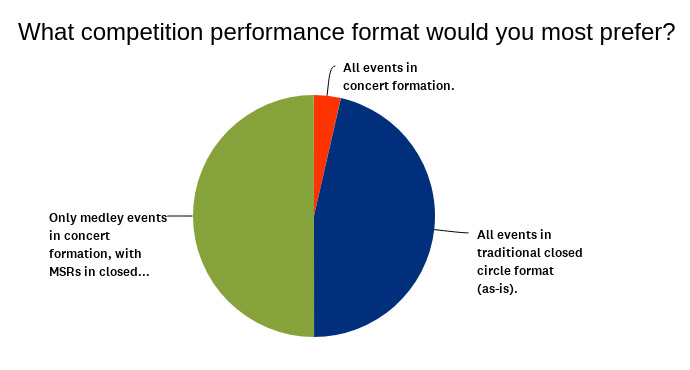
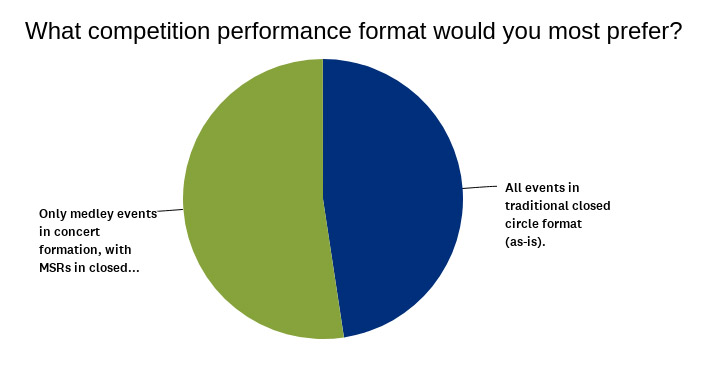
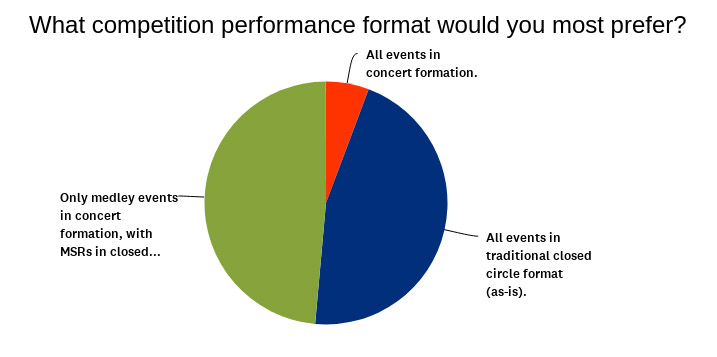
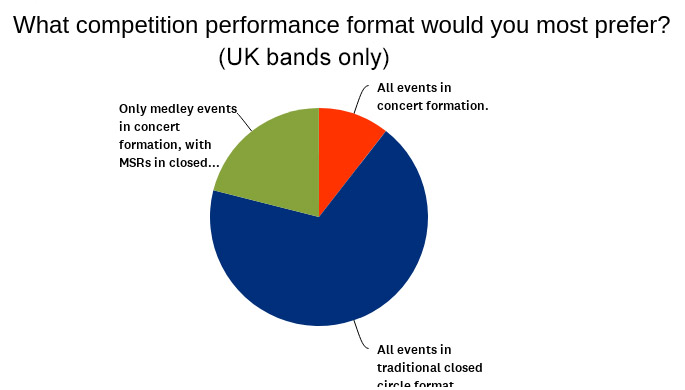
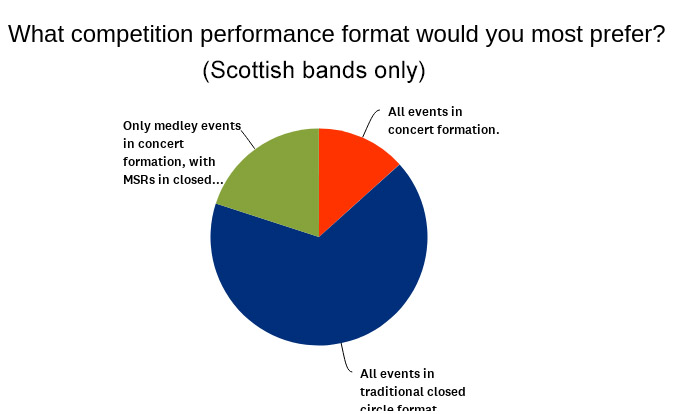
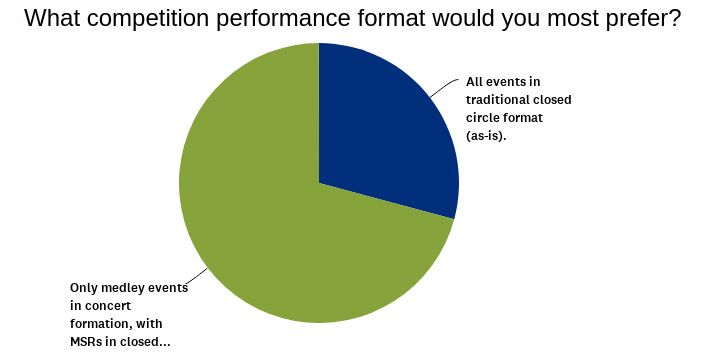
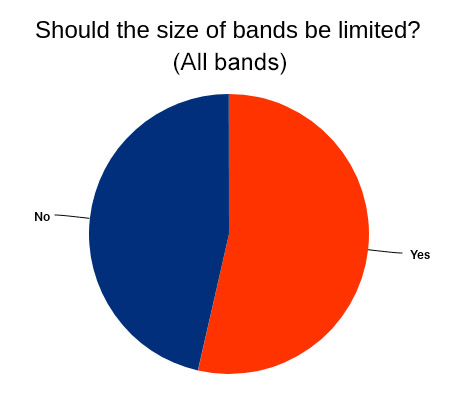
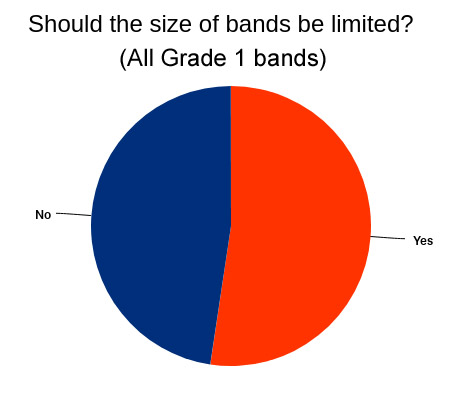
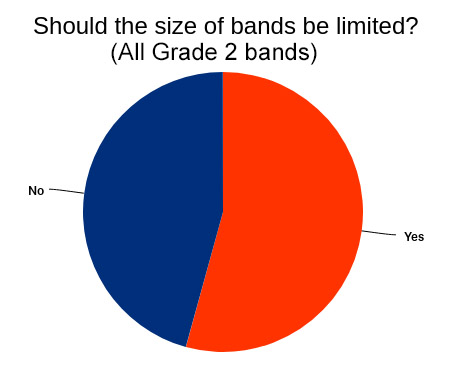
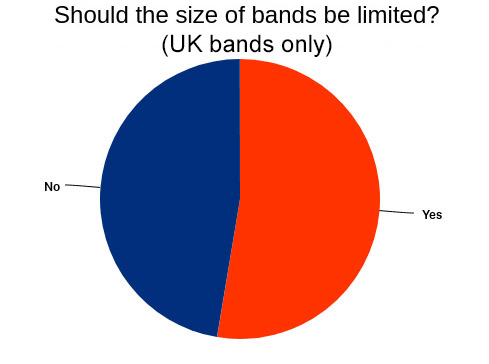
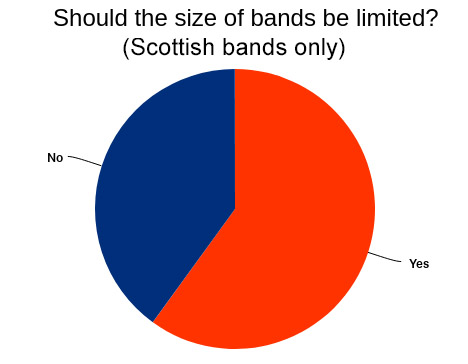
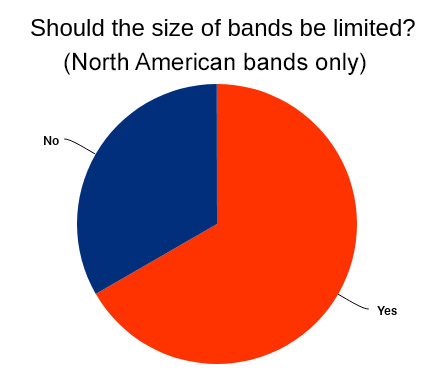
NO COMMENTS YET